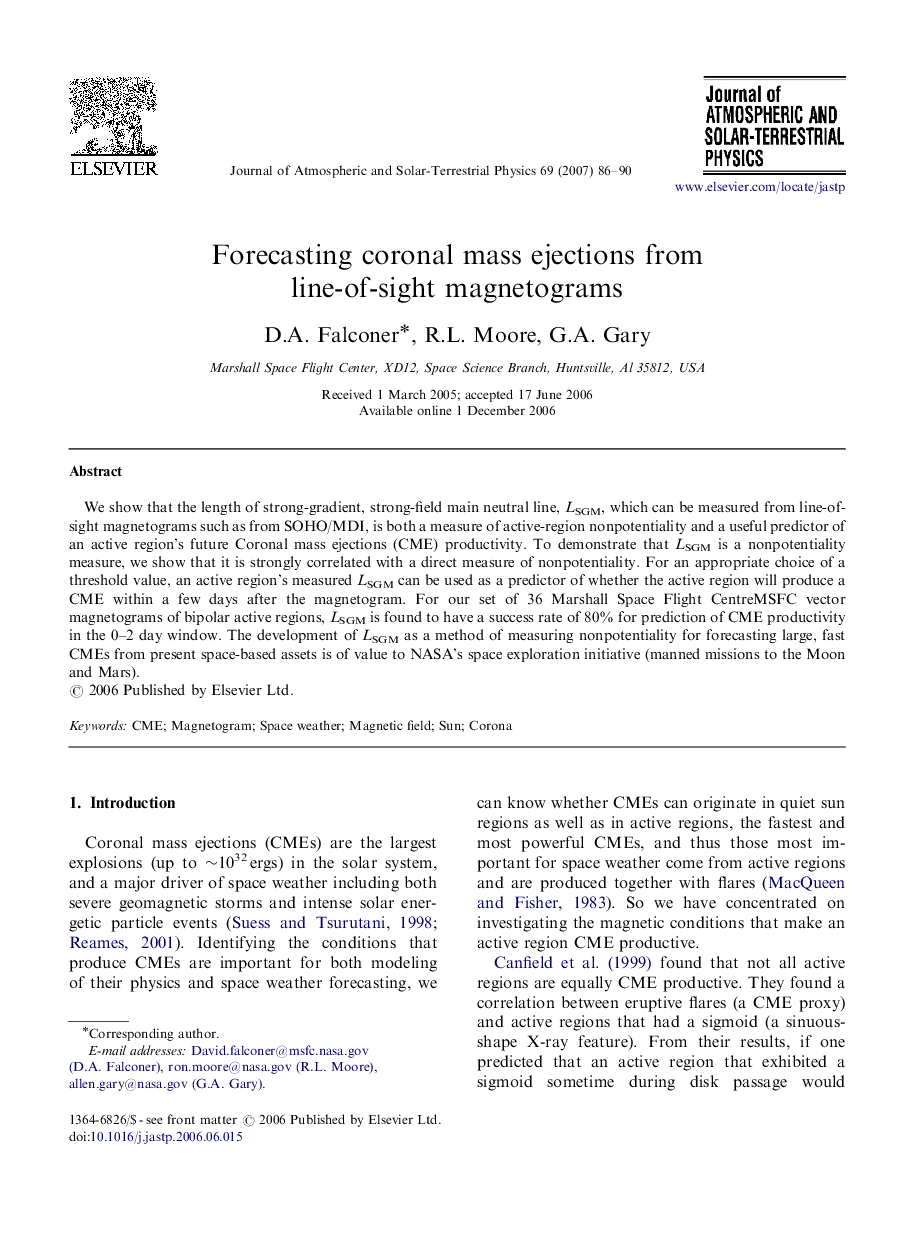| Article ID | Journal | Published Year | Pages | File Type |
|---|---|---|---|---|
| 1778213 | Journal of Atmospheric and Solar-Terrestrial Physics | 2007 | 5 Pages |
Abstract
We show that the length of strong-gradient, strong-field main neutral line, LSGM, which can be measured from line-of-sight magnetograms such as from SOHO/MDI, is both a measure of active-region nonpotentiality and a useful predictor of an active region's future Coronal mass ejections (CME) productivity. To demonstrate that LSGM is a nonpotentiality measure, we show that it is strongly correlated with a direct measure of nonpotentiality. For an appropriate choice of a threshold value, an active region's measured LSGM can be used as a predictor of whether the active region will produce a CME within a few days after the magnetogram. For our set of 36 Marshall Space Flight CentreMSFC vector magnetograms of bipolar active regions, LSGM is found to have a success rate of 80% for prediction of CME productivity in the 0-2 day window. The development of LSGM as a method of measuring nonpotentiality for forecasting large, fast CMEs from present space-based assets is of value to NASA's space exploration initiative (manned missions to the Moon and Mars).
Related Topics
Physical Sciences and Engineering
Earth and Planetary Sciences
Geophysics
Authors
D.A. Falconer, R.L. Moore, G.A. Gary,
